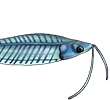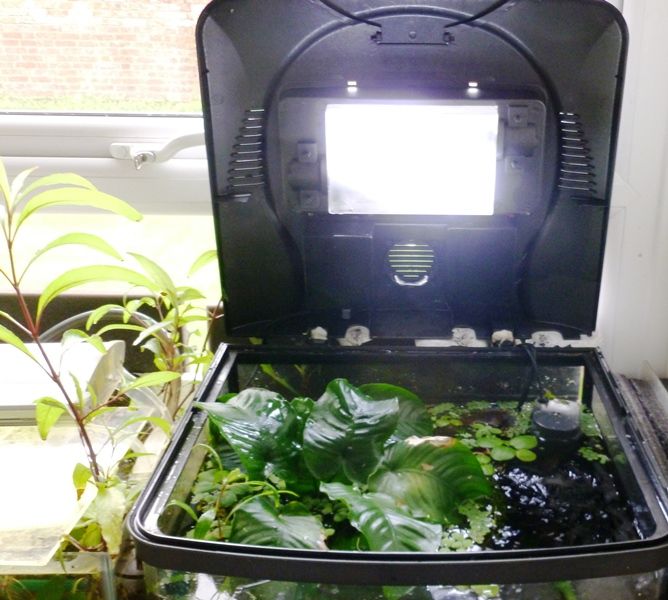TwoTankAmin wrote:Part of the problem you are seeing is that the bacteria you are wanting to have colonize in order to perform denitrification are some of the last ones to establish in tanks.
Yes, I was aware of this. The LFS owner's advice I'm following dictates a daily application of the MicrobeLift PL for two weeks to help accelerate this process, but I think even that is insufficient. I was hoping that the 50 days which have passed since I started would be enough, but apparently not. Also, since some of the plants have died, obviously this reflects a delay in the root system establishment within the tank as a whole.
TwoTankAmin wrote:Moreover, many aquarium plants are grown emersed and when we plant them those leaves tend to died off.
I'm unfamiliar with the cultivation techniques for aquarium plants, so I'm not sure what you mean by this but I'd like to know more if you don't mind elaborating. However, I would have expected some leaf loss if for no other reason the stress of transplantation from one tank (the store) to another (my tank). In my case, some of the plants just plain died - obviously no leaf regrowth is going to occur there.

TwoTankAmin wrote:I think the gent who is advising you may have neglected to mention how long it took for his tank to settle into the pattern he describes. When such a tank has been running for years it is easy to forget what it took to get it to that stage initially.
I think you are right on with this too. So far, I haven't mentioned the LFS by name, mainly because the owner's technique is not mainstream among serious aquarists (just look at some of the responses in this thread), but also because if you don't live in or near the San Francisco, California area, then the store's name is of no significance or consequence. That's fine, because we all have our own way of doing things, and what works for one person, or with one fish sp., may not work for/with another. But if you have ever been to the fish stores in San Francisco, you've probably visited this store. It's what I'd call an "old school" style of fish store - a small building crowded with lots of small tanks, stacked floor-to-ceiling, almost every tank with its own independent filter system, lighting, and heating; IMHO, the tanks are amazing, although not necessarily well decorated for display; the fish are pretty healthy as LFS fish go (not like many large chain stores, where so many fish have clamped fins, ich, etc.).
My point is that you're right: many of these tanks have obviously been running for years, and I think that this guy's success is in large part tied to the vitality of those plants. And that's why I want to get back to his store, to ask the owner more about the plants, especially the mosses and other plants that have taken over many of his tanks (my plants just aren't growing that fast in my tank conditions, and I'm not interested in a carbon dioxide supplemented hyper-growth aquarium - that's not what I'm trying to achieve). Like you said,
"All of this argues for a slower approach here in order to achieve the desired results." And as I stated in my previous post, I'm going to let the tank continue for at least a month more to see if the bacterial balance improves and the nitrate levels come down. Even the LFS owner told me that the values would rise initially, but he said that after a while (and I thought he meant a month or two, but obviously not), the values would gradually drop to nothing. Only time will tell.

TwoTankAmin wrote:...just as with ammonia or nitrite, different fish are differently able to cope with different levels of nitrate.
Exactly. I think my adult Corys (
aeneus,
trilineatus, and
agassizii) and my adult banjos don't mind so much. But my juveniles wouldn't like it. Also, although I haven't risked it, I suspect my
Scleromystax wouldn't like it either, if I let their tank get that bad (but they are too valuable and difficult to replace, so I keep their water really clean).
TwoTankAmin wrote:I... was bothered by what I read. It claims the bacteria works for either 11 months or 22 months based on bottle size purchased. But a bacterial community should be self sustaining in a tank as long as it isn't grossly neglected.
I wonder about this too. How I've interpreted this is as follows: (1) Of course the manufacturer wants to sell more of the product, so they instruct us to use it regularly, thus using it up and needing to buy more (by the way, the LFS owner has not so far advocated chronic reapplication of the product. His instructions were only to reapply a maintenance dose if any serious water changes are performed or if there is a problem with the tank); (2) I think it's human nature to believe that for things to happen, we have to intervene. And this week-by-week or month-by-month intervention gives us the "feeling" that we are actually doing something, so things should stay healthy. It ignores the fact that the bacterial colony should be self-sustaining as you point out, barring any sudden water chemistry shifts or changes to the tank (e.g., accidentally overfeeding, or a fish dying, or simply adding more fish to an already loaded tank); and finally (3) remember that this product is primarily an outdoor pond product. I suspect that the manufacturer is anticipating pond owners who do things like chronically overfeed the fish, and also natural environmental changes like seasonal temperature fluctuations, warm weather algal blooms, etc., that might disrupt the natural bacterial population; it's not that the bacteria will die in 11 months, but if you use their product on a monthly basis like they prescribe, you will run out of the product in 11 months and will need to buy more. Otherwise, it's hard to imagine that they are suggesting that our bacteria are going to die every 11 months.
Frankly, I'm enjoying this experiment, even though it's not "working" fully yet and it's not over. And ultimately, I would like to achieve plants that are as lush and green as the LFS owner's tanks. Only time will tell. Also, as this thread continues, I am learning a lot more about nitrogen dynamics in fish tanks, and for that I thank you all.
Cheers,
Eric







